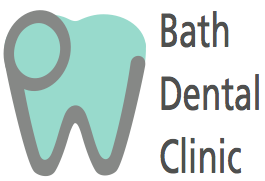Dental Implant Treatment
Dental implants are an artificial replacement for a tooth’s root. They fit directly into your jawbone and hold crowns or false teeth in place, in the same way that roots support natural teeth. Implants are a safe, well-established treatment. If your implants are well looked after, and if the bone they are fitted to is strong and healthy, you can expect them to last for many years.
We specialise in The Straumann® Dental lmplant System.
For more information, click here.
Crowns &
Bridges
Both crowns and the majority of bridges are fixed prosthetic devices. Unlike dentures, which you can take out and clean daily, crowns and bridges are cemented onto existing teeth or implants, and can only be removed by a dentist.
A crown is an artificial restoration that fits over the remaining part of a prepared tooth, making it strong and giving it the shape of a natural tooth. A crown is sometimes known as a 'cap'. A bridge is made up of two or more crowns for the teeth on either side of the gap and a false tooth/teeth in between. These false teeth can be made from gold, alloys, porcelain, or a combination of these materials. Dental bridges are supported by natural teeth or implants.
For more information, click here.
Root Canal Treatment
Root canal treatment (also called ‘endodontics') is needed when the blood or nerve supply of the tooth (called the ‘pulp') is infected through decay or injury. You may not feel any pain in the early stages of the infection. In some cases your tooth could darken in colour, which may mean that the nerve of the tooth has died (or is dying). This would need root canal treatment.
Most courses of treatment will involve two or more visits to your dentist. The tooth is checked at a later visit and when all of the infection has cleared, the tooth is permanently filled.
For more information, click here.
Dentures
Dentures are removable false teeth made of acrylic (plastic), nylon or metal. They fit snugly over the gums to replace missing teeth and eliminate potential eating and speech problems caused by gaps.
A ‘complete' or ‘full' denture is one which replaces all of the natural teeth in either the upper or lower jaw. A ‘partial' denture fills in the spaces left by lost or missing teeth. It may be fastened to your natural teeth with metal clasps or ‘precision attachments'. Dentures can be made to closely match your natural teeth so that your appearance hardly changes.
For more information, click here.
Dental Occlusion
Dental Occlusion is the relationship between the maxillary (upper) and mandibular (lower) teeth when they approach each other, as occurs during chewing or at rest.
Static Occlusion looks at the way the lower and upper teeth are aligned with one another when the jaw is at rest, and is stationary or not moving. The dentist will need to observe the patient’s mouth at rest to be able to measure that particular patient’s static occlusion. Centric Occlusion looks at the way the lower and upper teeth come together when the jaw is closed; it is about how the teeth are aligned once the patient bites down. Malocclusion occurs when the upper and lower teeth are not aligned properly, and can lead to underbites, overbites or crossbites, which can in turn lead to various dental problems – especially if the improper dental occlusion or malocclusion is not addressed in its early stages.
For more information, please click here.
Cosmetic Dentistry
We offer a range of treatments that improve dental aesthetics in terms of colour, position, shape, size, alignment and overall smile appearance. These include teeth whitening, bonding, bridges, veneers, implants, gum lifts, bite reclamation, inlays and onlays.
For a personal assessment, please call the surgery on 01225 333848.
Orofacial Pain &
TMD
Orofacial pain is chronic pain felt in the head, face and mouth. It is estimated that over 95% of cases of orofacial pain result from dental causes which can be eased with the correct treatment.
For more information about this condition, click here.
Periodontal Disease
Periodontal disease is an infection and chronic inflammation of the structures around a tooth, the periodontal ligament, which holds a tooth in the jaw. In the earliest stage of periodontal disease, gingivitis can occur with symptoms such as sore, red gums that bleed when brushed. In more severe forms of the disease, all of the supporting tissues around the tooth are affected and progressively this will eventually lead to tooth loss. In severe cases, all the teeth can be lost.
Periodontal Disease is the 6th most prevalent disease throughout the world and it is significantly linked to general well-being, quality of life and longevity.
For more information on how to treat this, click here.
Clear Aligner Orthodontic Treatment
Clear aligners, also known as invisible or transparent aligners, can be an alternative to fixed braces for those who want to straighten their teeth. A clear aligner is a transparent tray made from plastic that fits over your teeth, helping to straighten them in increments. Typically, you change your tray every few weeks. You will wear your tray consistently, but it can be removed for cleaning or when you eat.
We use the ClearCorrect Aligner System at Bath Dental Clinic.
For more information, click here.

